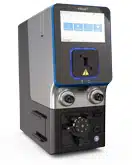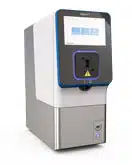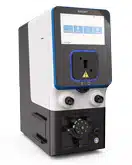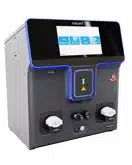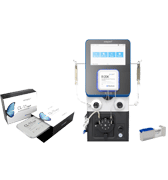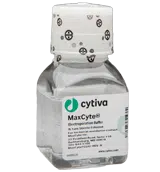The State of Cell and Gene Therapy Presentation
Safe and Efficient Non-Viral Cell Therapy Development Using Electroporation
Virtual breakout session
January 29, 2025
Jim Brady, Senior Vice President of Technical Applications and Customer Support at MaxCyte, presents on how electroporation enables the development and manufacturing of life-changing cellular therapies.
In this breakout session from The State of Cell and Gene Therapy summit hosted by Genetic Engineering and Biotechnology News (GEN), James Brady, PhD, presents Safe and Efficient Non-Viral Cell Therapy Development Using Electroporation.
Key topics covered in this session
- Innovations in Non-Viral Gene Editing and Gene Delivery: Understand the breadth of cellular engineering beyond gene knockout and viral CAR delivery.
- Cell Therapy Case Studies: See how electroporation technology has advanced lifesaving treatments for a variety of diseases.
- Advantages of MaxCyte Electroporation: Learn why MaxCyte's platform is trusted by industry leaders. Our instruments address the dominant challenges in the industry: standardization, therapeutic complexity, regulation and time.
Whether you’re a researcher, clinician or therapy maker, this session provides valuable insights into not only the current state of cell and gene therapy but the future of the field.
Watch the Impact of Electroporation on Cell Therapy
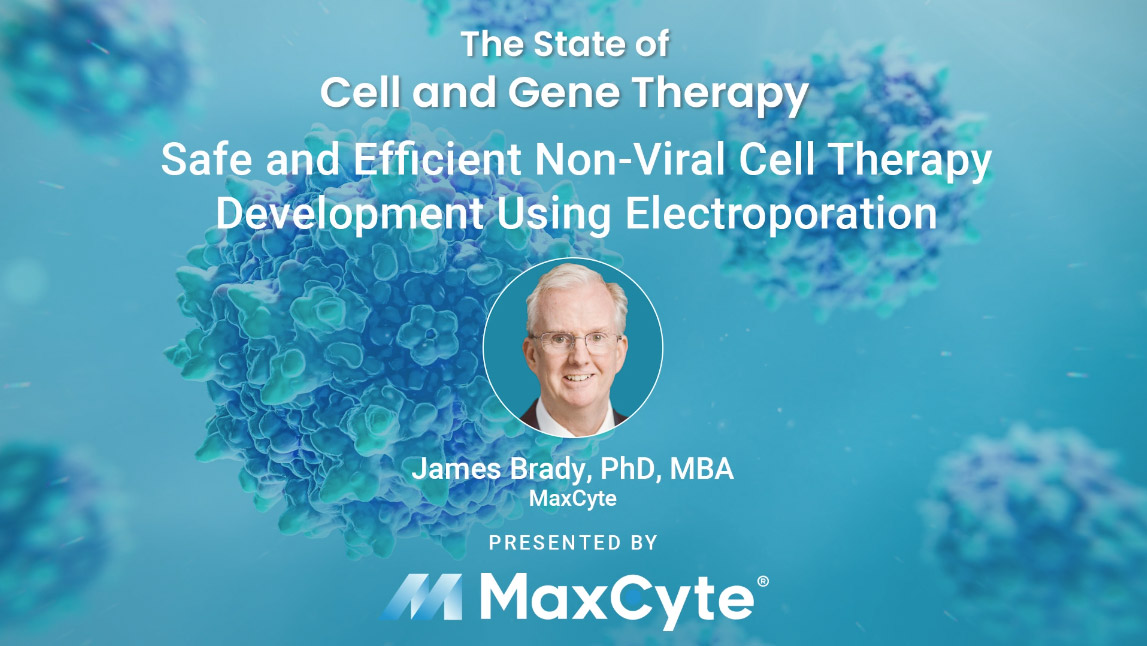
Case studies presented
Non-viral manufacture of allogeneic CAR T cell therapy for acute myeloid leukemia using CRISPR knockout and transposon delivery: With MaxCyte's clinical electroporation technology, researchers co-delivered CAR transposon mini circles, transposase RNA and CRISPR RNPs into T cells from healthy donors, ultimately yielding healthy cells that demonstrated robust expansion as well as potent cytotoxic activity. In addition, this approach mitigated the risk of donor cell rejection and indicated clinical suitability.
Knockout of CD38 in dual-engineered NK cells for treating multiple myeloma: Daratumumab, or DARA, is an antibody therapeutic for treating multiple myeloma; however, it also induces fratricide among NK cells. To address this, researchers engineered NK cells to express a high-affinity variant of CD16 and knocked out the CD38 gene using CRISPR RNPs delivered by MaxCyte electroporation. In the end, the investigators saw a reduction in tumor burden and proved MaxCyte's technology gentle on cells.
Autologous cellular therapy for treating B cell non-Hodgkin's lymphoma: In the first in-human study of CRISPR knock-in CAR T products, patients were given a chemotherapy regimen followed by one infusion of MaxCyte-engineered cells. Researchers developed an enhanced type of CAR T cell by integrating an anti-CD19 CAR sequence into the endogenous PD1 locus. In this case, compared to lentiviral CAR delivery, non-viral engineering resulted in shortened prep time, reduced production expenses and increased safety and efficacy of the final product.
Presenter
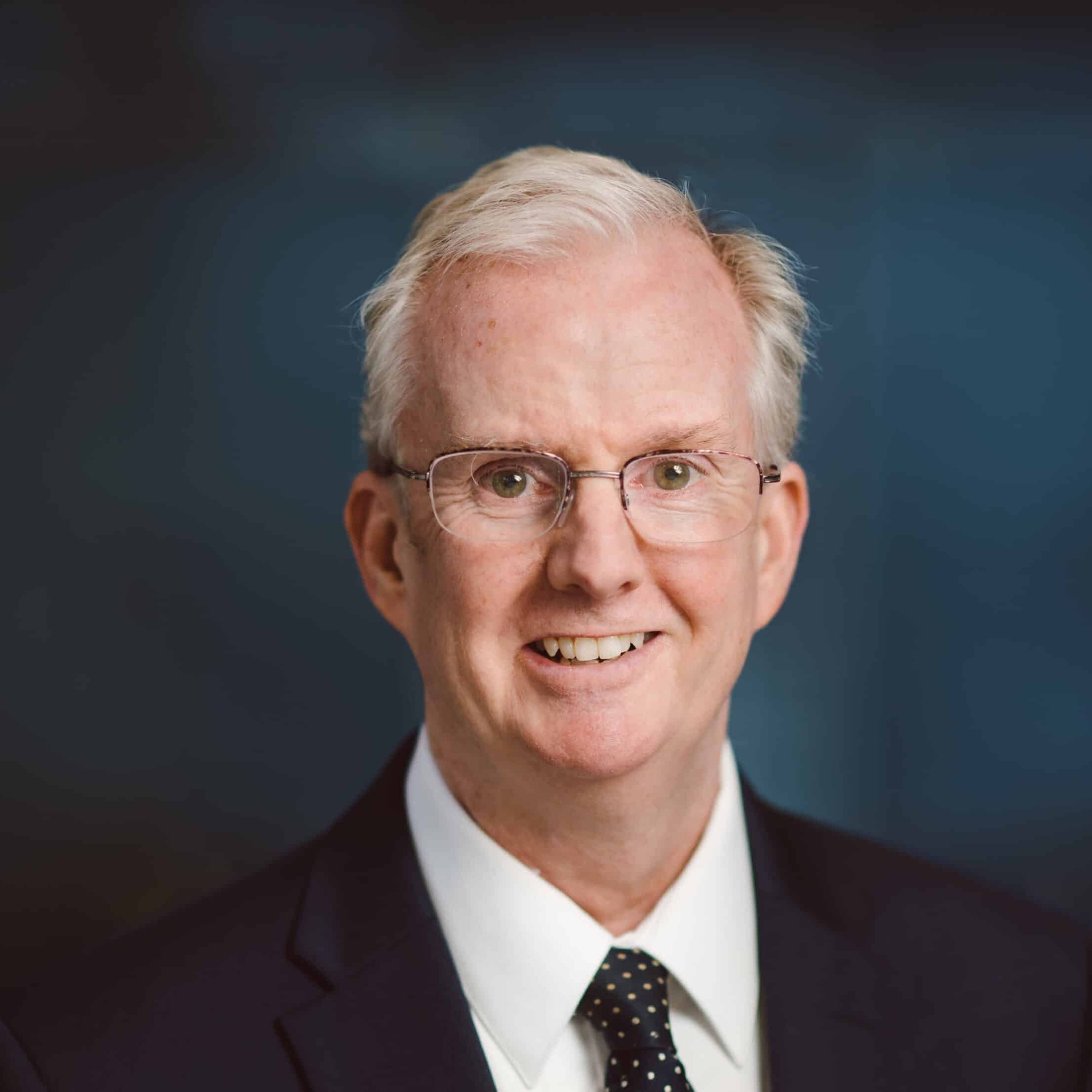
Have more questions?
Send your question to one of our cell engineering experts.
Transcript
Kevin Davies: Hello and welcome to this breakout session hosted by MaxCyte. I'm Kevin Davies. MaxCyte should need little introduction to this audience. They've been a leader for two decades or more in the field of electroporation, a critical technology that's proven its worth in many approved and ongoing clinical trials. I'm delighted to welcome Dr. Jim Brady, who is senior vice president of technical applications and customer support at MaxCyte. He will be presenting Safe and Efficient Non-Viral Cell Therapy Development Using Electroporation. I'll be back to ask Jim a few questions at the end of his presentation. Over to you, Jim.
James Brady: Well, hello everyone. I’d like to thank the sponsors for giving me the opportunity to present at this innovative conference and thank all of you for listening today. So today I have a very simple agenda. I'm going to start with an introduction to MaxCyte and our expert electroporation platform. I'll then share a few cell therapy case studies based on peer-reviewed publications that were authored by MaxCyte users. These cover allogeneic CAR T manufacturing involving CRISPR knockout and transposase delivery. We have a case study around NK cell engineering and then the final case study involves CAR T manufacturing by CRISPR knock-in.
So let's start with an introduction to the MaxCyte platform. Before talking about our technology, I'd like to begin by providing a brief introduction to MaxCyte, the company. Now MaxCyte was founded 25 years ago to enable non-viral engineering of primary cells for therapeutic applications. Our proprietary flow electroporation technology was developed specifically for use in the clinic and our mission from the very beginning has been to enable highly efficient loading of molecules into precious cells from patients while imparting minimal perturbation to cell viability and cell phenotype.
This timeline predicts a number of significant milestones in our company history, and it shows that over the years we have expanded beyond cell therapy into application areas such as bioproduction and drug discovery. I don't have time to emphasize or to highlight all of our key corporate advancements, but I do want to emphasize that from the very beginning, we've been collecting feedback from researchers and clinicians in many different application areas, work environments and job functions. And we took the software and hardware capabilities that end users identified as being critical for cell therapy enablement and we incorporated those features into the expert line of instruments that we launched in 2019.
Now I want to take a moment to describe in more detail how the expert platform addresses significant challenges in the cell therapy industry. So the first challenge relates to standardization. MaxCyte instruments facilitate process standardization by providing users with libraries of optimized electroporation protocols that allow seamless translation from small-scale research to large-scale manufacturing. The technology effectively provides plug and play processes that ensure reproducible results across multiple users and multiple sites.
The next challenge relates to therapeutic complexity. Complex next-generation cell therapies require technologies that can efficiently introduce large and complex molecular cargoes into an array of cell types. In contrast to limitations of viral, mechanical and chemical approaches to cell engineering, flow electroporation offers the flexibility to transfer DNA, MRNA, RNPS, small nucleic acids and other loading agents alone or in combination into cell lines and primary cells at scales that range from thousands to billions of cells per run.
Regulatory concerns represent a third challenge or set of challenges. MaxCyte derisked regulatory challenges and accelerates the review process by allowing our customers and our partners to reference MaxCyte FDA master file when they submit the regulatory findings.
And then the final challenge, again, or set of challenges, relates to speed and efficiency. So bench-to-clinic timelines as well as manufacturing times are critical cost drivers, but more importantly, reduced development and manufacturing times can accelerate patients access to potentially life-changing or lifesaving therapies. So high transfection efficiency, high cell viability, seamless scalability and process consistency, which are key attributes of MaxCyte’s electroporation expert platform, enable clinicians and manufacturers to scale their processes and deliver therapies to patients with minimal delays.
When weighing the advantages of MaxCyte over other technology providers, it's important to recognize that MaxCyte’s platform has been adopted and validated by many industry-leading cell therapy developers. This slide summarizes the number of partnerships and clinical licenses we've announced in recent years and some of our publicly disclosed partners are named at the bottom of the slide. Here's a list of different diseases that have been targeted with MaxCyte engineered cell therapies and clinical trials. The slide also highlights various gene-engineering strategies that have been enabled by MaxCyte's technology. You can see in the lower right that I've called out Casgevy, which is the first commercially approved CRISPR engineer stem cell therapy for treating sickle cell disease as well as beta thalassemia. This chart shows that both autologous and allogeneic therapies based on MaxCyte-engineered cells are advancing through clinical trials, and it highlights the variety of cell types that are being engineered by our customers and partners. And again, you can see Casgevy at the center of this chart.
Now let's take a closer look at MaxCyte’s instrumentation and consumables. MaxCyte offers several different instrument models to support researchers and clinicians at all phases of the therapeutic discovery and translational spectrum. All of our instruments employ the same core technology and user interface, which allows seamless scaling of protocols from lab bench to clinic to commercial manufacturing without the need for process re-optimization. The ATx instrument seen on the right can perform small- to medium-scale transfections via static electroporation. It’s primarily intended for earlier-stage research or process development activities. The STx and GTx instruments, in addition to doing small-scale static electroporation, they also allow scalability up to approximately 20 billion cells because these instruments have mechanical features that permit large-scale transfection via flow electroporation. The STx is intended for non-clinical applications. The GTx is the instrument of choice for clinical use. It has 21 CFR Part 11 enabled software and it's supported by our FDA master file. Now scalability on the expert platform is enabled by a range of single-use consumables called processing assemblies, or PAs for short. MaxCyte’s extensive portfolio of PAs allows users to process thousands to billions of cells in a single transfection run. Loading efficiency, cell viability remain constant or consistent because MaxCyte’s proprietary electroporation technology allows the same electroporation protocols to be used at different scales. Now, I'd also like to point out there are no gaps in the range of PA sizes. Therefore, MaxCyte users don't need to adjust the scale or scope of their experiments to compensate for any limitations in the consumable portfolio. I should also point out this slide includes a picture of MaxCyte's VLx instrument, which can process up to 200 billion cells in a single run. We'll take a closer look at the PAs in the next couple of slides.
Now here we see the PAs that MaxCyte offers for non-GMP applications. At one end of the spectrum, there are multi-well PAs allowing simultaneous processing of anywhere from 2 to 8 samples, accommodating approximately half a million to 20 million cells per sample, of course depending on the PA and cell type. And these are ideal for applications such as optimizing loading agent concentrations or maybe testing different guide RNA sequences. Mid-range PAs accommodating .1 to 3.5 mL volumes, these can process up to 700 million cells. And the small to mid-range PAs are all processed via static electroporation, which means there's no movement of cells during processing.
At the other end of the spectrum, flow electroporations are performed with the R20 and the CL2 PAs shown on the far right of this figure, and these can process 20 and 100 mLs of concentrated cells, respectively. Now, during flow electroporation, the cells move from a sample bag into the electroporation chamber in a sequential series of small fractions. All the process cells are then pulled into a collection bag at the end of the process. The maximum processing time for 100 mLs, which typically represents maybe 10 to 20 billion cells, is less than 30 minutes. And note that this slide shows our STx instrument, which is offered for non-GMP applications. Now many of our research-grade PAs have GMP-grade counterparts for clinical use, and this slide shows the GMP-grade PAs that we offer. Note that here I'm showing the GTx instrument, which is used for processing patient cells, and I'm also showing the VLx. While the VLx is generally used for large-scale bioprocessing applications such as antibody or viral vector production, it does have potential applications for allogeneic cell therapy manufacturing. And I should also point out the PAs that we offer for flow electroporation incorporate bio weldable tubing, which enables sterile integration into a variety of different closed-cell therapy workflows.
For the remainder of my presentation, I'd like to share a few case studies based on peer-reviewed journal publications authored by MaxCyte users. These case studies highlight the versatility of MaxCyte technology for enabling cell therapy development with multiple cell types and different cell engineering modalities.
Now the first case study showcases work from investigators at the Clinical University of Navarra in Spain. They were developing a non-viral approach to generating allogeneic CAR T cells for treating AML [Acute Myeloid Leukemia]. Now because AML, or I should say because T cells from AML patients often have reduced anti-tumor efficacy, this group opted to generate allogeneic CAR T cells by using MaxCyte electroporation to deliver Sleeping Beauty transposons encoding an anti CD33 CAR into T cells from healthy donors. The authors noted that Sleeping Beauty transposons provide multiple advantages over viral base delivery, including larger cargo capacity, reduced manufacturing complexity, as well as safe integration profiles. Moreover, CAR delivery via MaxCyte electroporation also enabled the researchers to co-deliver CRISPR RNPs targeting the endogenous T cell receptor alpha chain or the track locus and the beta 2 microglobulin gene. So this mitigated the potential for graft versus host disease and it also mitigated chances for donor cell rejection.
Now this is a graphic depiction of their cell engineering workflow. Co-delivery of a transpose on mini circle transposase mRNA and two different CRISPR RNPs into activated T cells was accomplished in a single step using MaxCyte electroporation. Initial optimization studies were conducted at a small scale using the multi-well OC-25x3 processing assemblies, and then they scaled their process more than twentyfold using MaxCyte’s R-1000 PAs, and then functional assays were conducted after expanding the engineered cells for 10 days in the presence of cytokines.
The researchers generated CAR T cells with dual HLATCR knockout efficiencies of nearly 70 percent as shown by the green bars and the graph on the left. And then they could actually purify the double negative population to 98 percent using magnetic bead selection. CAR expression resulting from transposon delivery average between 40 and 50 percent in the double knockout populations, and importantly, they observe comparably high levels of CRISPR editing and CAR expression at both small and large scales with about 20 and 50 million cells, respectively. And furthermore, cells electroporated at small and large scale show comparable capacities for expansion, as shown in the graph on the right. The data here show that cells processed at small and large scales are functionally equivalent in terms of cytotoxic activity and interferon gamma production. They also demonstrated antitumoral potential in an NSG mouse xenograft model. The large-scale electroporation, which started with 50 million unmodified cells, yielded more than 300 million purified CAR T double knockout cells at the end of the procedure, which demonstrated suitability of this process for clinical applications.
So in summary, the researchers from Navarra and their collaborators were able to develop an efficient and scalable process for allogeneic T cell engineering by using MaxCyte clinical electroporation technology to co-deliver CAR transposon mini circles, transposase RNA and CRISPR RNPs into T cells from healthy donors. This non-viral approach yielded healthy cells that demonstrated robust expansion as well as potent cytotoxic activity. And the investigators also showed how seamless scalability afforded by MaxCyte electroporation could yield sufficient number of cells for clinical use.
The second case study is based on a publication from Dr. Richard Childs and colleagues at the National Heart, Lung and Blood Institute (NHLBI) of the National Institutes of Health. Now to provide some background, daratumumab, or DARA for short, is a promising antibody therapeutic for treating multiple myeloma by targeting CD38 on the surface of cancer cells. Now the anti-tumor activity of DARA and other immunotherapeutics is partly mediated by antibody dependent cellular cytotoxicity or ADCC activity of NK cells. Now NK cells display CD16 proteins that bind to the FC regions on antibody-coded tumor cells. However, the efficacy of DARA is compromised because the target antigen, CD38, is also expressed on the surface of NK cells. So while DARA is targeting myeloma cells, it's also inducing fratricide among the patients’ NK cells. So the goal of the NHLBI investigators was to enhance NK cells’ capacity for ADCC by engineering the cells to express a high-affinity variant of CD16. But they also wanted to make the engineered cells resistant to DARA-induced fratricide by knocking out the CD38 gene using CRISPR RNPs delivered by MaxCyte electroporation.
So the approach was relatively straightforward. NK cells were harvested from healthy donor peripheral blood buffy coat. The isolated NK cells were expanded ex vivo in the presence of irradiated feeder cells. To generate the CD38 knockout NK cells, they used the MaxCyte ATx instrument to deliver CRISPR RNPs targeting CD38. And then after characterizing those cells, they added a process step to knock in the high affinity CD16 receptor using AAV transduction. Transduction with AAV6 vectors took place 30 minutes post electroporation. So let's look first to run through the data looking first at the CD38 knockout experiment. So on the left, we see that MaxCyte electroporation is highly efficient with an average knockout efficiency of 92 percent in expanded NK cells from eight different donors. We also can see electroporation is gentle on cells, as viability remained high for several days following transfection and matched the viability of unmanipulated cells as shown in the graph on the right. Then here we see more data demonstrating the gentleness of MaxCyte electroporation. Cell proliferation 14 days after electroporation was the same as for non-edited NK cells as shown in the graph on the left, and the researchers also use flow cytometry to survey a panel of NK cell surface markers. In the chart on the right, you can see that none of the markers they surveyed show significant expression changes after RNP delivery via electroporation.
Now, after demonstrating efficient CD38 knockout, the investigators optimized an AAV-based approach for introducing the high-affinity CD16 gene, which they refer to as CD16-158V, based on the amino acid change that conferred this increased antibody affinity. So they created an AAV6 vector with CD16-158 Vgene, which was flanked by homology arms corresponding to the CRISPR cut site in the CD38 gene. So this enabled stable integration of the trans gene into the disrupted CD38 locus by homology-directed repair. An expression of the trans gene was driven by an [EF-1] alpha promoter. They also included a flag-tag at the end of the express protein, so this allowed them to easily distinguish expression of the CD16-158V protein from the endogenous CD16 protein.
Generation of double edited NK cells was then measured by surface flag expression seven days post RNP electroporation and AAV transduction. And here you can see measurement of flag expression in multiple NK cells, or NK cells for multiple donors, demonstrating knock-in efficiency somewhere between 40 and 60 percent. In an in vitro cell-killing assay, the double edited NK cells in combination with DARA induced increased license of multiple myeloma target cells. You can see that in the magenta line in the lefthand graph. And then the graph on the right summarizes in vivo data from a mouse xenograft study, which showed that the CD38 knockout, CD16 knock-in cells had a greater capacity to augment the anti-tumor activity of DARA compared to non-engineered or single-edited cells after infusion into mice, which had been previously engrafted with MM.1S myeloma cells, which were engineered to express firefly luciferase.
So to summarize the second case study, MaxCyte demonstrated highly efficient knockout of CD38 in NK cells, the process is gentle on the cells – it didn't affect proliferation or functional characteristics. The MaxCyte process also enabled authors to generate dual-engineered NK cells, and the publication showed that for stable multiplex engineering, MaxCyte’s electroporation technology can be used with complementary genetic engineering tools such as AAV transduction to generate next-generation NK cell therapies. And then finally, they showed that the dual-engineered NK cells, in combination with DARA, showed increased cell lysis and a greater reduction in tumor burden, so demonstrating also superior anti-tumor activity.
The third and final case study is based on published data from a clinical trial in China involving a novel autologous cellular therapy for treating B cell non-Hodgkin's lymphoma. Now for this application, the researchers wanted to develop an enhanced type of CAR T cell by integrating an anti-CD19 CAR sequence into the endogenous PD1 locus. So essentially their strategy was to simultaneously knockout the PD1 checkpoint inhibitor via CRISPR editing while introducing the CAR gene into the same locus by homology-dependent recombination. Now T cells from patients were co-transfected with CRISPR RNPs targeting PD1, and they're also transfected with a linear double-stranded DNA template encoding a CD19 CAR, which is flanked by DNA arms with homology to the PD1 locus. The patients were given a lymphodepleting chemotherapy regimen followed by one infusion of MaxCyte-engineered cells.
In this case, or in the following slides, the resulting cells with CD19 CAR knocked into the PD1 locus were referred to as PD1-19bbz cells. Now the investigators carried out a phase 1 trial with eight patients who previously had not been treated with CAR T therapy. Engineered cells from all patient donors exhibited greater than 90 percent viability. In the final infusion products, the average percentage of PD-1 indels was about 60 percent and average CAR integration was about 20 percent. Here, data show in vivo persistence and proliferation of the engineered PD1-19bbz cells post infusions in the eight patients. By measuring the percentage of CD19 cells and peripheral lymphocytes, the authors determined that cytotoxic activity of PD1-19bbz cells was observed in patients for months after infusion. The authors also reported that the CAR knock-in cells had a higher CD8 to CD4 ratio and an increased number of memory T cells compared to cells that were transduced with lentiviral CD19 CAR in the absence of PD1 knockout. Mild cytokine release syndrome observed in some patients while immune effector cell associated neurotoxicity syndrome, or ICANS, did not occur. During a median observation period of 12 months, complete remission was observed in seven of the eight patients. This is defined as an absence of clinical symptoms and PET, CT and bone marrow evidence of lymphoma. However, after a complete remission, disease relapse was detected in two patients at six months, partial remission and relapse was observed in the remaining patient. In later follow-up, durable responses were found in five patients.
So to summarize the third case study, in this first in-human study of CRISPR knock-in CAR T products, the authors highlighted that non-viral engineering is simplified compared to lentiviral CAR delivery with shortened prep time, reduced production expenses and increased safety and efficacy of the final product. I also want to mention that in a follow-up study, published after the study, based on clinical data from 21 patients, the study confirmed that PD1-19bbz exhibited promising efficacy with a manageable toxicity profile.
So before I conclude, I just want to re-emphasize MaxCyte’s unwavering commitment to enabling the development and manufacturing of life-changing cellular therapies. We support our partners and also lead patients through best-in-class instrumentation, high-level technical and regulatory support, cGMP compliance and a corporate culture that reflects 25 years of devotion to advancing non-viral cellular engineering. At this point, I'd like to thank everyone for listening and I'd also be happy to address any questions.
Kevin Davies: Thank you so much, Jim. That was a really excellent overview. We do appreciate your contributions to the site and MaxCyte’s support, of course. Time for a couple of questions, if you can stick around. How do new clients, new companies, new organizations actually work with and interact with your team? It's not as simple as just buying one of these expert instruments and plugging it in right there. Figuring out the precise, most effective and safest electroporation protocol is something that, my understanding is, you do very collaboratively with your customers. Would you, could you elaborate on that?
James Brady: That's a great question, Kevin. Obviously there's no one-size-fits-all approach to cell therapy development or cellular engineering, so when customers come to MaxCyte, we ask them a lot of questions about the cell types, not just the molecules that they want to load but try to get some feel for how they culture the cells, what are the different upstream and downstream processes that they want to put in place before or after electroporation? As I mentioned, we have 25 years of expertise, so we've seen a lot of different cell types, a lot of different processes, and we can leverage that expertise to help customers not just with getting molecules into the cell, but how do they keep the cells happy afterwards? How do they maximize their desired phenotypes? And we work with them not just at the research phase, but we help them take their processes from the R&D lab into the PD lab and ultimately into the clinic. And our field service, our field applications team, is working with them at all phases of that research and manufacturing spectrum.
Kevin Davies: You use the term devotion, Jim. And I think that you can feel it when you talk, and I know that that applies to your team as well.
James Brady: Yeah, absolutely. These are scientists, internal scientists. I should point out, we have a team of application scientists internally. It kind of reflects our customer base. We have immunologists, we have gene editing experts, bioproduction scientists. So internally we develop protocols and processes, then we pass those to our field-based team. Again, our field scientists located all over North America and Europe have similar backgrounds to our customers and a lot of our scientists actually are former customers who have come to work with MaxCyte. So the close collaboration between our internal and field-based scientists translates into a level of expertise that our customers really appreciate.
Kevin Davies: And finally, you mentioned Casgevy and presented some very interesting case studies, so I think it's appropriate to ask, and maybe this is for you more personally than you representing MaxCyte, but I'll let you qualify that: Where do you see the field growing over the next 12 to 24 months? What are maybe some of the overarching trends or waves impacting the field that you think will really help the field and grow your business?
James Brady: Yeah, I mean, there have been so many exciting developments in the field, just within the past 10 years, with CAR T becoming an entrenched technology. And we've seen all the possibilities that have been opened up by CRISPR editing and related technologies. I think as I tried to highlight in my presentation, beyond T cell engineering and viral-based CAR delivery, there are a lot of exciting approaches to non-viral CAR delivery using transposons, CRISPR knock-in. Gene editing is becoming a much broader field now with base editors and prime editors and other novel modalities for introducing genes and modifying the genome. I think if you just look at the breadth of cell types our customers are working with, the diversity of engineering technologies that they're using, I think there are just a lot of exciting innovations and we were just scratching the surface in terms of what we can do with engineered cell therapies.
Kevin Davies: That bodes very well. Well, that's all the time we have. Many thanks to Jim Brady, senior vice president at MaxCyte, for another really informative session and MaxCyte, again, for supporting the summit this year. You're watching The State of Cell and Gene Therapy hosted by GEN.
